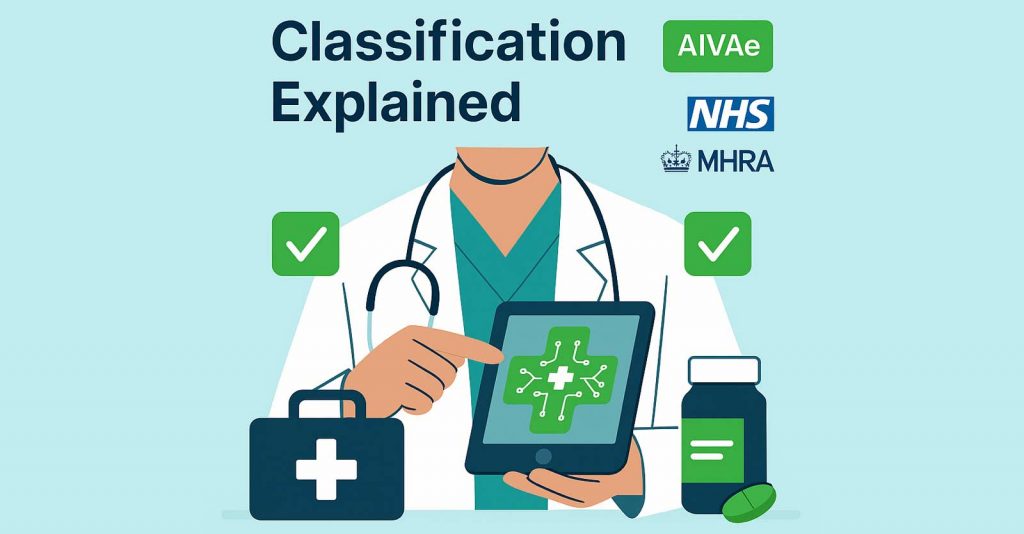Navigating Medical Device Regulations for AI in Pharmacy
Introduction: Why Regulation Matters for AI in Pharmacy
As AI technologies like AIVAe continue to evolve, their potential to support pharmacy teams, streamline clinical services, and improve patient care is becoming undeniable. But with this potential comes responsibility. At PharmBot AI, we’re preparing AIVAe to meet the standards required to be classified as a medical device. This isn’t just a regulatory requirement, it’s a commitment to clinical safety, transparency, and trust.
What Makes AI a Medical Device?
A tool like AIVAe becomes a medical device when it supports or influences clinical decision-making, for example, by helping pharmacists verify prescriptions, provide PGD-based consultations, or deliver evidence-based advice. According to UK Medical Devices Regulations (as amended in 2002), such tools fall under Software as a Medical Device (SaMD) if they are intended for medical purposes.
How AI Medical Devices Are Classified
AI tools are classified by the level of risk they pose:
- Class I: Low risk (e.g., lifestyle advice tools)
- Class IIa: Medium risk (e.g., decision support used alongside a clinician)
- Class IIb: Higher risk (e.g., tools influencing diagnosis or treatment)
- Class III: Highest risk (e.g., autonomous clinical decision-making)
Based on AIVAe’s current capabilities and intended use, we anticipate it will fall under Class IIa or IIb. It is designed to assist pharmacists, not replace them, which mitigates the overall risk, but its outputs still inform clinical services.
Our Regulatory Roadmap
To prepare AIVAe for UKCA marking, we are focusing on:
- Defining a precise Intended Purpose Statement
- Building a robust clinical evaluation strategy
- Aligning with MHRA guidance on AI adaptivity and transparency
- Creating a post-market surveillance plan to ensure ongoing safety
We are also working with experts in the RADIANT CERSI programme, which supports innovators in navigating the evolving landscape of AI regulation in healthcare.
RADIANT CERSI and MHRA AI-Airlock: Supporting Innovation
Being part of the RADIANT CERSI programme allows us to engage directly with regulators, academics, and industry leaders. We’re learning how to frame AIVAe’s functionality within current and emerging regulatory frameworks. In parallel, we’re applying to the MHRA’s AI-Airlock programme to accelerate regulatory validation in a safe, sandboxed environment.
Our Commitment to Safe, Responsible AI
At PharmBot AI, we believe AI must enhance, not replace, human expertise. AIVAe is built with pharmacists in mind, ensuring control, transparency, and accountability remain firmly in the hands of professionals. Regulation isn’t a hurdle; it’s a foundation for meaningful, safe innovation.
Final Thoughts
If you’re exploring AI in clinical settings, pharmacy automation, or regulatory pathways, we’d love to connect. We’re actively building partnerships and sharing our journey with the wider digital health community.
#PharmBotAI #AIVAe #DigitalHealth #MHRA #AIinPharmacy #MedicalDevice #HealthTech #SaMD

